Natural Language Processing (NLP) stands at the fascinating intersection of linguistics and artificial intelligence, offering a window into how machines can understand, interpret, and generate human language. This technology is reshaping our digital experiences, enabling more natural interactions with technology and providing insights from language data at unprecedented scales.
NLP encompasses a range of techniques and models, from syntax analysis and sentiment detection to advanced conversational AI and machine translation. These technologies are powered by machine learning and deep learning, allowing systems to learn from vast amounts of text data, recognize patterns, and make predictions about language.
One of the most visible applications of NLP is in virtual assistants like Siri, Alexa, and Google Assistant. These AI-powered tools can understand spoken commands, process them, and respond in a way that mimics human conversation. Beyond convenience, NLP is also making significant strides in accessibility, helping those with disabilities to interact with technology more easily.
In the business world, NLP is unlocking the value of unstructured data. Companies are using it to analyze customer feedback, automate customer service, and monitor social media sentiment. This not only improves efficiency but also provides valuable insights into customer behavior and preferences.
The challenges of NLP lie in the complexity and variability of human language, including idioms, sarcasm, and dialects. Despite these hurdles, advancements in deep learning and the availability of large datasets have led to significant improvements in NLP technologies, making them more sophisticated and versatile than ever before.
As NLP continues to evolve, it promises to further blur the line between human and machine communication, making our interactions with technology more intuitive and human-like. This not only enhances our daily digital experiences but also opens new avenues for understanding human language and cognition.













